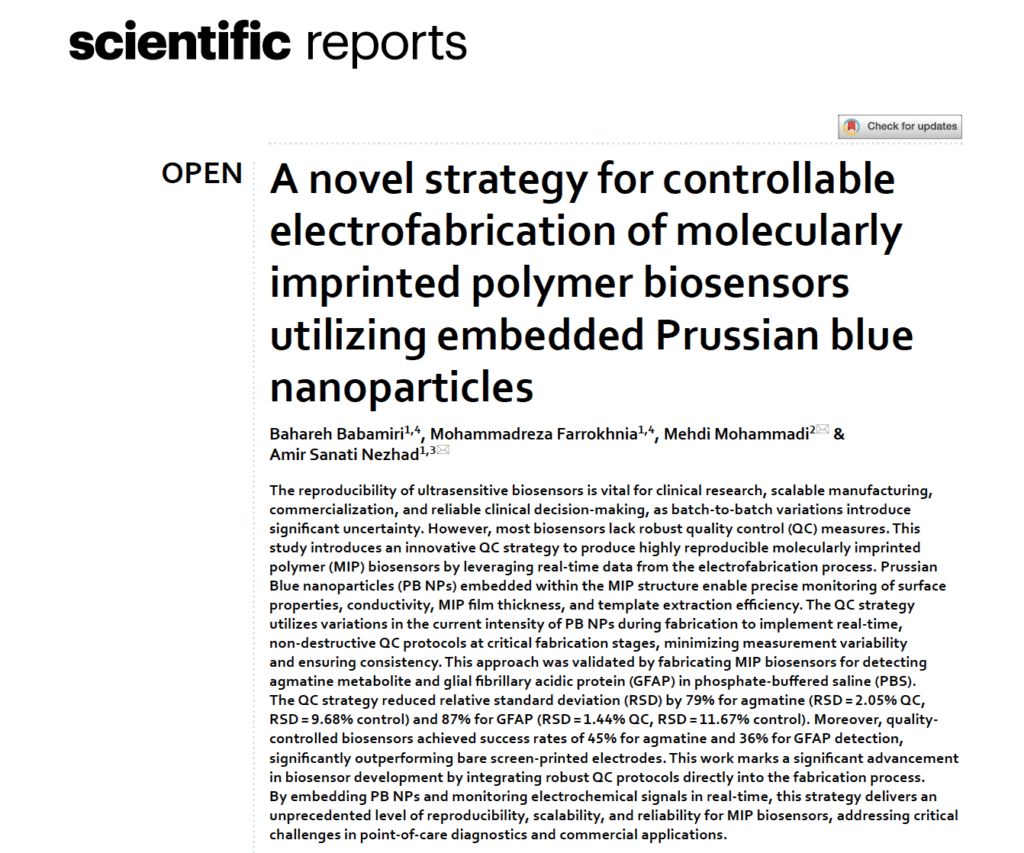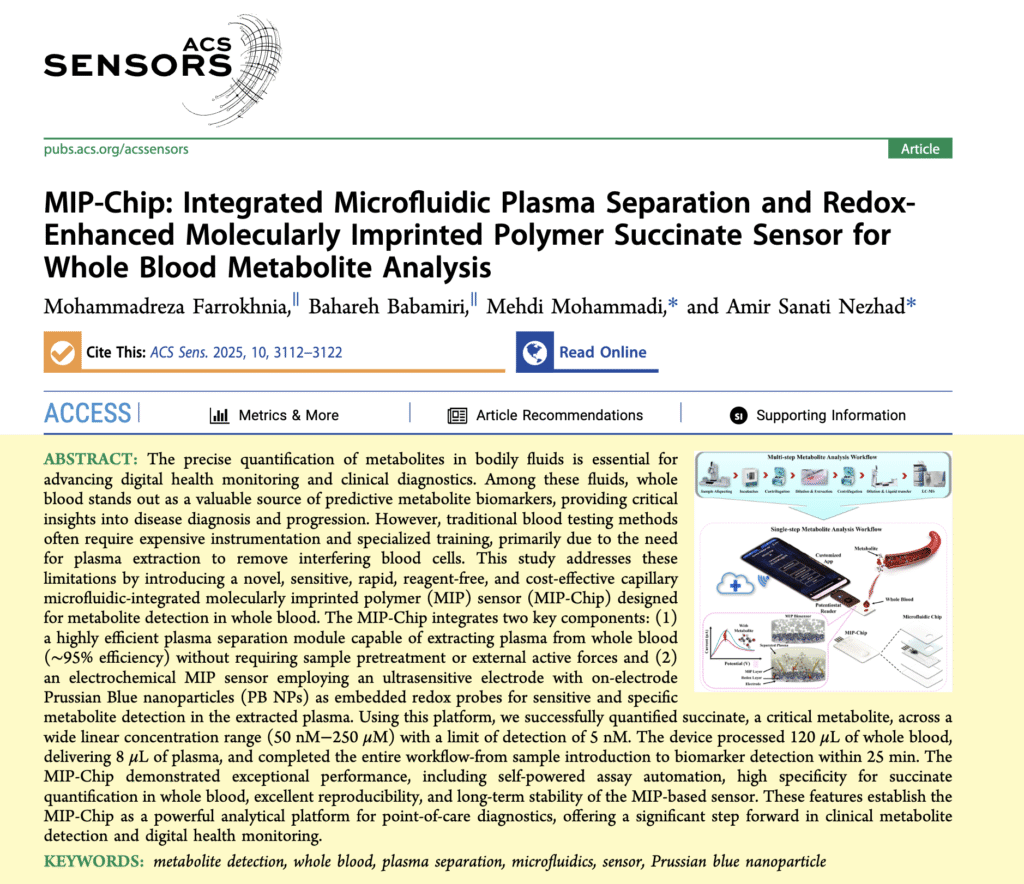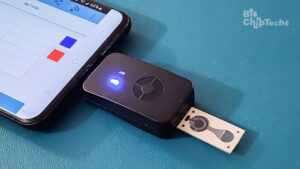Our Technology
Molecularly Imprinted Polymers (MIPs)
- MIPs are highly efficient biomimetic receptors known for their chemical stability and ability to selectively recognize target molecules.
- They combine several advantages—easy preparation, low cost, scalability, and long shelf life—making them a promising foundation for the next generation of chemical-biological sensors.
- MIPs enable continuous, real-time detection of bacteria, viruses, and key biomolecules such as metabolites, hormones, proteins, and nucleic acids.
- This capability provides critical biological information for early disease diagnosis, tracking disease progression or remission, and ongoing patient monitoring.

Our Publications
MIP-Chip: Integrated Microfluidic Plasma Separation and RedoxEnhanced Molecularly Imprinted Polymer Succinate Sensor for Whole Blood Metabolite Analysis
A breakthrough MIP-Chip platform enables rapid, cost-effective metabolite detection directly from whole blood, eliminating the need for complex plasma extraction or expensive equipment. This capillary microfluidic-integrated sensor combines efficient plasma separation (~95% recovery) with an ultrasensitive electrochemical MIP sensor for highly specific biomarker quantification. Demonstrating exceptional speed (results in 25 minutes), low detection limits (5 nM), and robust stability, the MIP-Chip offers a powerful solution for point-of-care diagnostics and digital health monitoring.
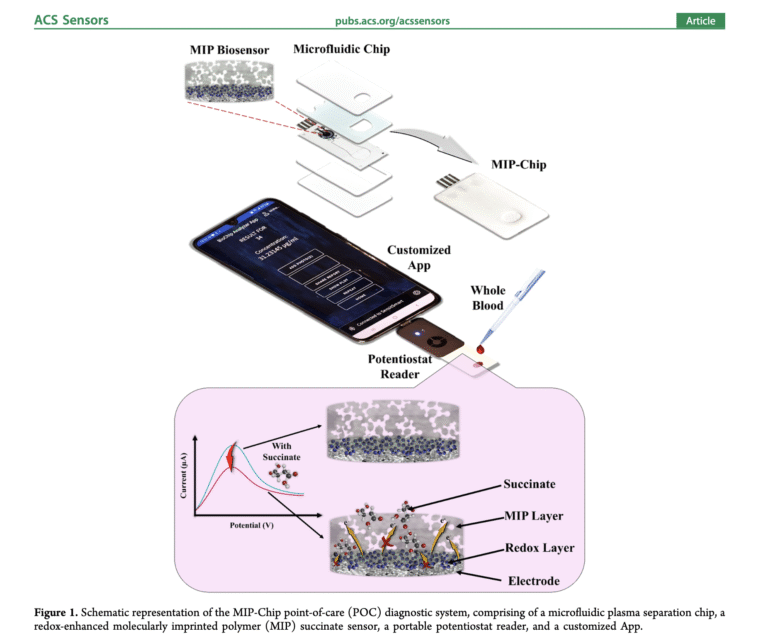
Farrokhnia, M.; Babamiri, B.; Mohammadi, M.; Sanati Nezhad, A. MIP-Chip: Integrated Microfluidic Plasma Separation and Redox-Enhanced Molecularly Imprinted Polymer Succinate Sensor for Whole Blood Metabolite Analysis. ACS Sens. 2025, 10 (4), 3112–3122.
Molecularly Imprinted Polymer Biosensor Based on Nitrogen-Doped Electrochemically Exfoliated Graphene/Ti3 CNTX MXene Nanocomposite for Metabolites Detection
Our innovative MIP-based biosensor, built on a MXene/nitrogen-doped graphene nanocomposite, enables rapid, low-cost, and highly sensitive metabolite detection. Using molecularly imprinted polymers and electrodeposited Prussian Blue nanoparticles as redox probes, the platform delivers direct, specific electrical signaling of target metabolites such as agmatine. It achieves an impressive detection limit of 0.1 nM, a wide linear range (1 nM–100 μM), and results in just 10 minutes. Compatible with both buffer and plasma samples, this miniaturized microfluidic sensor combines excellent conductivity, scalability, and autonomous on-chip performance—making it a powerful candidate for next-generation point-of-care diagnostics.
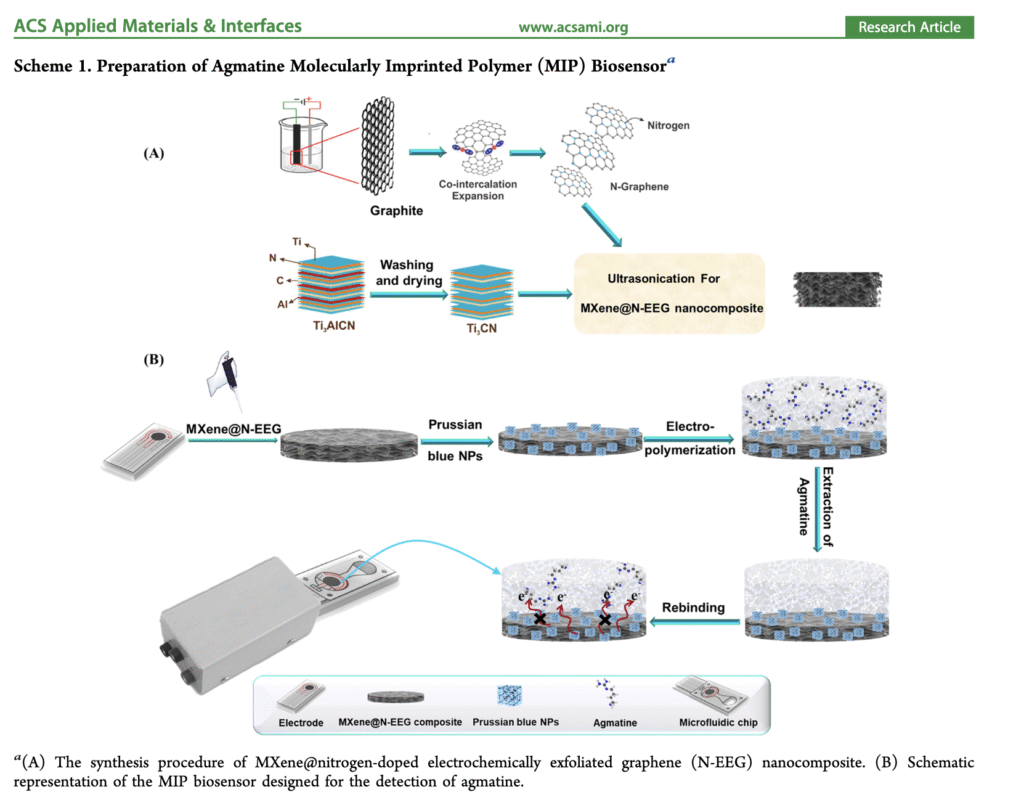
Babamiri, B.; Sadri, R.; Farrokhnia, M.; Hassani, M.; Kaur, M.; Roberts, E. P. L.; Mohammadi, M.; et al. Molecularly Imprinted Polymer Biosensor Based on Nitrogen-Doped Electrochemically Exfoliated Graphene/Ti₃CNTₓ MXene Nanocomposite for Metabolites. ACS Appl. Mater. Interfaces 2025, 16 (21),
A novel strategy for controllable electrofabrication of molecularly imprinted polymer biosensors utilizing embedded Prussian blue nanoparticles
We developed an innovative quality control (QC) strategy to ensure highly reproducible molecularly imprinted polymer (MIP) biosensors, overcoming one of the biggest challenges in biosensor manufacturing. By embedding Prussian Blue nanoparticles (PB NPs) within the MIP structure and monitoring electrochemical signals during fabrication, this approach enables real-time, non-destructive QC of key parameters like film thickness, conductivity, and template extraction efficiency. Applied to biosensors for agmatine and GFAP, the method reduced variability by up to 87% and significantly improved detection success rates compared to conventional approaches. This breakthrough integrates QC directly into the fabrication process, delivering unprecedented reproducibility, scalability, and reliability for next-generation point-of-care diagnostics and commercial applications.
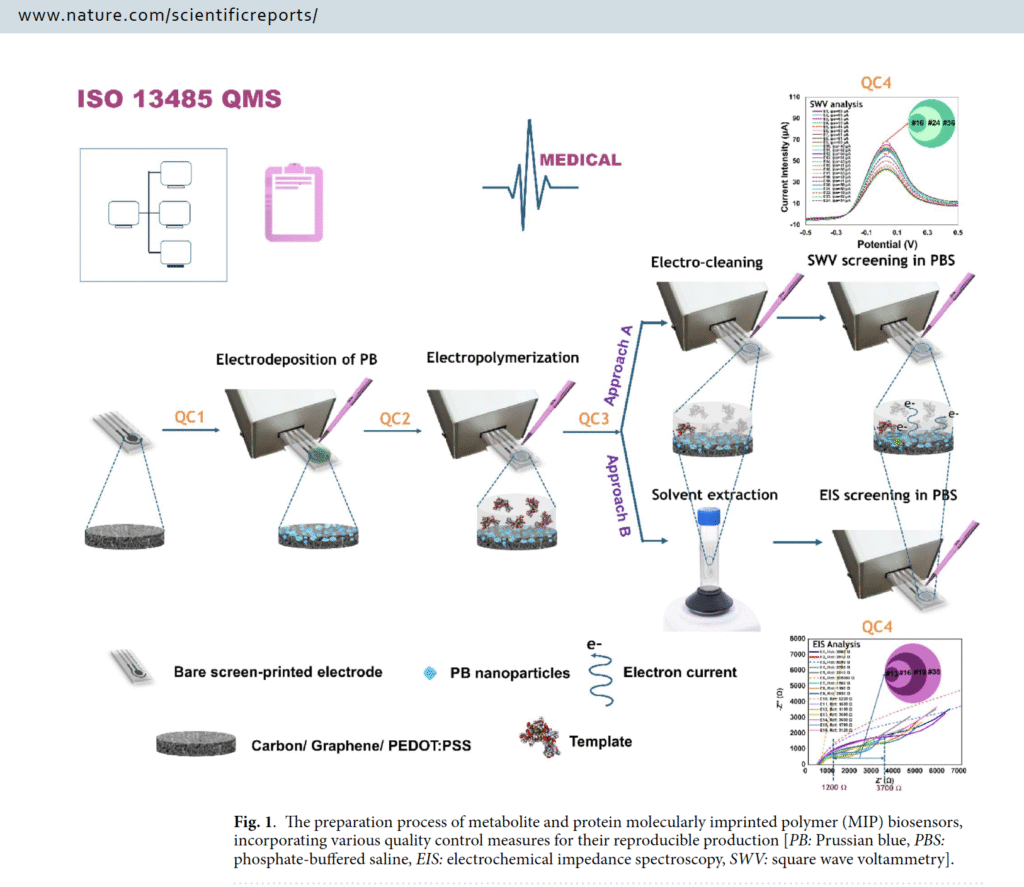
Babamiri, B.; Farrokhnia, M.; Mohammadi, M.; Sanati Nezhad, A. A Novel Strategy for Controllable Electrofabrication of Molecularly Imprinted Polymer Biosensors Utilizing Embedded Prussian Blue Nanoparticles. Sci. Rep. 2025, 15 (1), 8859.

